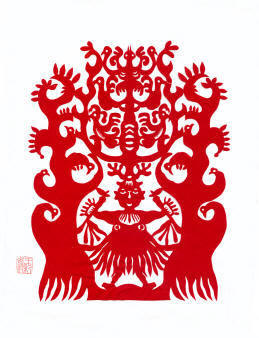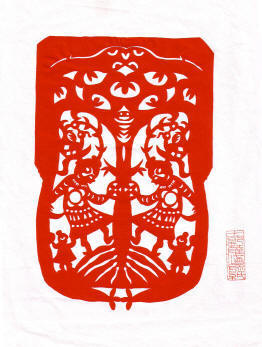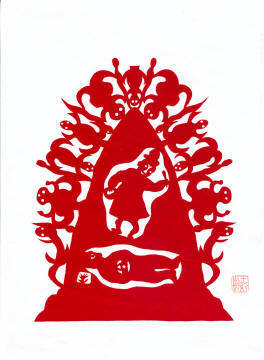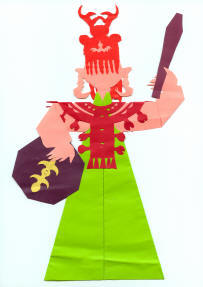|
|
||||||
|
|
||||||
|
|
|
|||||
|
|
||||||
|
Cut paper art, called 窗花 (chuāng huā) in Chinese or "window flower" in English, is a tradition whose roots are ancient. It is said to have been invented by one Cai Lun during the Han Dynasty (206 BC - 220 AD). Cut with either scissors or sharp knives, the art remains primarily the domain of village women. These images are shamanic in nature, sourced not in mainstream Chinese ideology / art, but in the ancient cultural heritage of the Manchu or Man Nationality of far northeastern China whose roots in ancient shamanism are still visible. The themes visualized in these pieces center on the hidden energies present and functioning in the world; themes that are essential elements in the ancient shamanic folk spirituality of the larger culture of which the Manchu are a part. These three pieces are from the Yitong Man Nationality Museum in Yitong, Jilin Province, China, and were acquired in 2004. They are modern and contemporary, the three pieces shown above having been purchased from the young lady who created them.
An additional form of cut paper art is seen in the "paper doll" style, also practiced in this part of China. This piece is also shamanic in theme, depicting a shaman and detailing the unique elements of the shaman's costume. The piece is two sided, both sides showing full detail.
Imagi Gallery |
|
|||||



